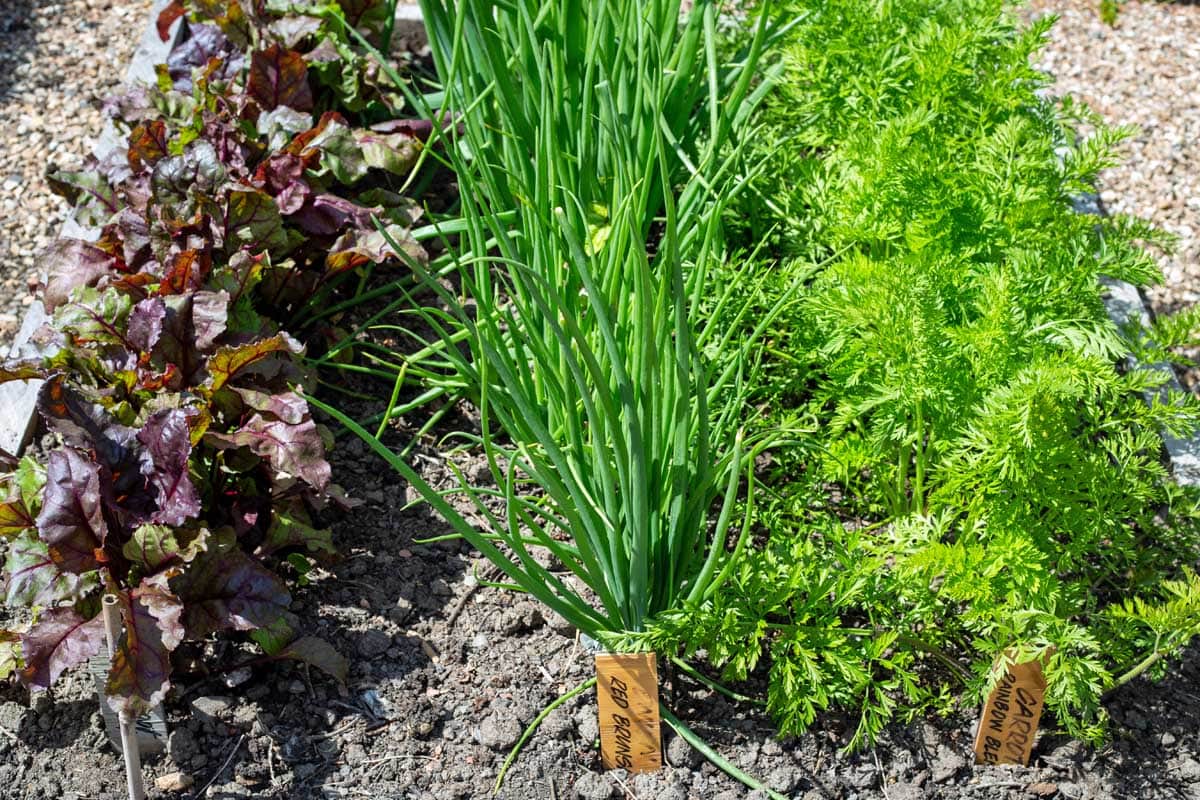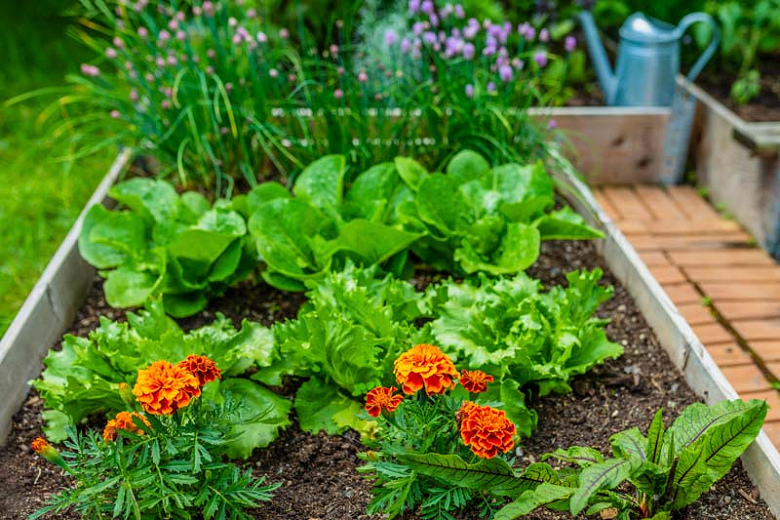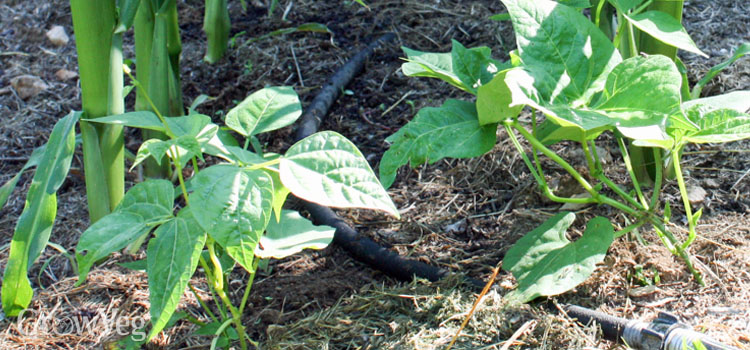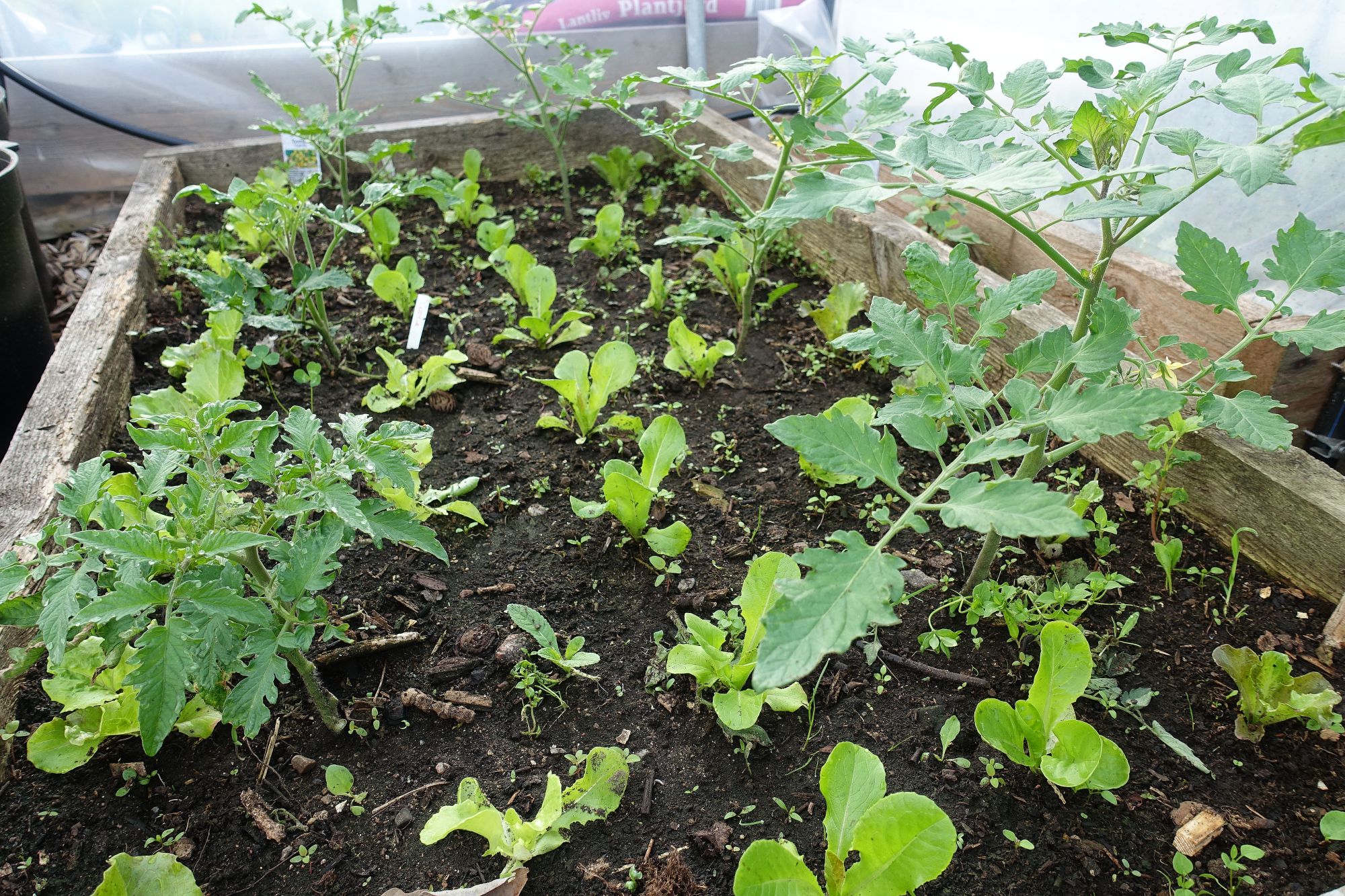Companion Plants That Will Make Your Lettuce Love You
Companion Planting That Will Make Your Lettuce Love You
Lettuce is a cool-season crop that is easy to grow and versatile in the kitchen. But did you know that there are certain companion plants that can help your lettuce grow even better?
Companion planting is the practice of planting certain plants together in order to benefit each other. Some plants can help to repel pests, attract beneficial insects, or improve the soil quality. When you plant companion plants with your lettuce, you can help to create a healthy and productive garden.
Here are some of the best companion plants for lettuce:
- Chives and garlic: These herbs release sulfur compounds that help to repel aphids, cabbage moths, and other pests that can damage lettuce.
- Marigolds: Marigolds are another great insect repellent. They also produce a chemical that helps to suppress the growth of soil-borne diseases.
- Carrots: Carrots and lettuce have similar growing requirements and can be planted together in the same row. Carrots help to improve the drainage of the soil, which can benefit lettuce.
- Beans: Beans fix nitrogen in the soil, which can help to improve the growth of lettuce. They also provide shade for lettuce, which can help to protect it from the hot sun.
- Spinach: Spinach and lettuce can be planted together in the same bed. They have similar growing requirements and will help to shade each other from the hot sun.
- Radishes: Radishes mature quickly and can be harvested before they shade out lettuce. They also help to break up compacted soil, which can benefit lettuce roots.
- Cucumbers: Cucumbers and lettuce can be planted together in a staggered row. Cucumbers need full sun, while lettuce prefers partial shade. By staggering the rows, you can give both plants the conditions they need to thrive.
- Tomatoes: Tomatoes can provide shade for lettuce and help to protect it from pests. They also attract pollinators, which can help to improve the pollination of lettuce.
- Basil: Basil is a fragrant herb that can help to deter aphids and other pests. It also improves the flavor of lettuce.
When choosing companion plants for lettuce, it is important to consider the growing requirements of both plants. Plants with similar growing requirements will be more likely to thrive when planted together. It is also important to consider the size of the plants. Some companion plants, such as tomatoes, can grow quite large and may shade out lettuce.
If you are new to companion planting, it is a good idea to start with a few simple combinations. Once you have had some success, you can experiment with different companion plants to find the combinations that work best for you.
Lettuce is a delicious and versatile vegetable that can be grown in a variety of climates. But did you know that there are certain companion plants that can help your lettuce grow better?
Some of the best companion plants for lettuce include:
- Carrots: Carrots help to loosen the soil and improve drainage, which can benefit lettuce plants. They also attract beneficial insects that help to control pests.
- Radishes: Radishes are another good choice for companion planting with lettuce. They grow quickly and can help to shade the lettuce plants from the sun, which can help to prevent them from bolting (flowering too early).
- Marigolds: Marigolds are known for their insect-repelling properties, and they can help to keep pests away from your lettuce plants. They also add a splash of color to your garden.
- Basil: Basil is a great companion plant for lettuce because it helps to repel aphids and other pests. It also has a pleasant aroma that can help to deter mosquitoes.
- Dill: Dill is another herb that can help to repel pests from lettuce plants. It also attracts beneficial insects that help to pollinate the lettuce flowers.
If you're looking for more information about companion planting with lettuce, I recommend visiting Garden Wiki. They have a comprehensive guide that covers all the basics, as well as some more advanced tips.
FAQ of companion plants to lettuce
What are companion plants?
Companion plants are plants that are grown together in the same garden space because they benefit each other in some way. Some companion plants attract beneficial insects that help to control pests, while others help to improve the soil quality or provide shade.
What are some good companion plants for lettuce?
Some good companion plants for lettuce include:
- Carrots: Carrots help to loosen the soil and improve drainage, which can benefit lettuce plants. They also attract beneficial insects that help to control pests.
- Cucumbers: Cucumbers and lettuce have similar growing requirements and can be planted together in the same row. They also help to shade each other from the hot sun.
- Herbs: Many herbs, such as chives, garlic, and mint, are good companion plants for lettuce. They help to repel pests and attract beneficial insects.
- Marigolds: Marigolds are a popular companion plant for many vegetables, including lettuce. They help to repel pests and nematodes, which can damage lettuce plants.
- Peas: Peas are nitrogen-fixing plants, which means they can help to improve the soil quality for lettuce plants. They also provide shade and support for lettuce plants.
What are some bad companion plants for lettuce?
Some bad companion plants for lettuce include:
- Broccoli: Broccoli and other members of the cabbage family can attract the same pests as lettuce, so it is best to avoid planting them together.
- Kale: Kale can shade out lettuce plants and prevent them from getting enough sunlight.
- Onions: Onions have a strong smell that can stunt the growth of lettuce plants.
- Spinach: Spinach and lettuce have similar growing requirements, so it is best to avoid planting them together.
- Tomatoes: Tomatoes can attract the same pests as lettuce, so it is best to avoid planting them together.
How far apart should companion plants be planted?
The distance between companion plants will vary depending on the size of the plants and the amount of space you have available. However, as a general rule of thumb, you should plant companion plants at least 12 inches apart.
What are some other benefits of companion planting?
In addition to helping to control pests and improve soil quality, companion planting can also:
- Increase crop yields
- Improve plant health
- Attract beneficial insects
- Deter pests
- Provide shade and support
- Add beauty to your garden
Image of companion plants to lettuce
- Carrots: Carrots help to repel pests that can damage lettuce, such as aphids and carrot flies.

- Herbs: Herbs like basil, chives, and mint can help to deter pests and attract beneficial insects to your lettuce plants.

- Pole beans: Pole beans provide shade for lettuce plants, which can help to protect them from the sun and heat.

- Spinach: Spinach and lettuce are both cool-season crops that can be planted together. They also help to suppress weeds.

- Tomatoes: Tomatoes help to repel whiteflies, which can be a pest of lettuce.

Post a Comment for " Companion Plants That Will Make Your Lettuce Love You"